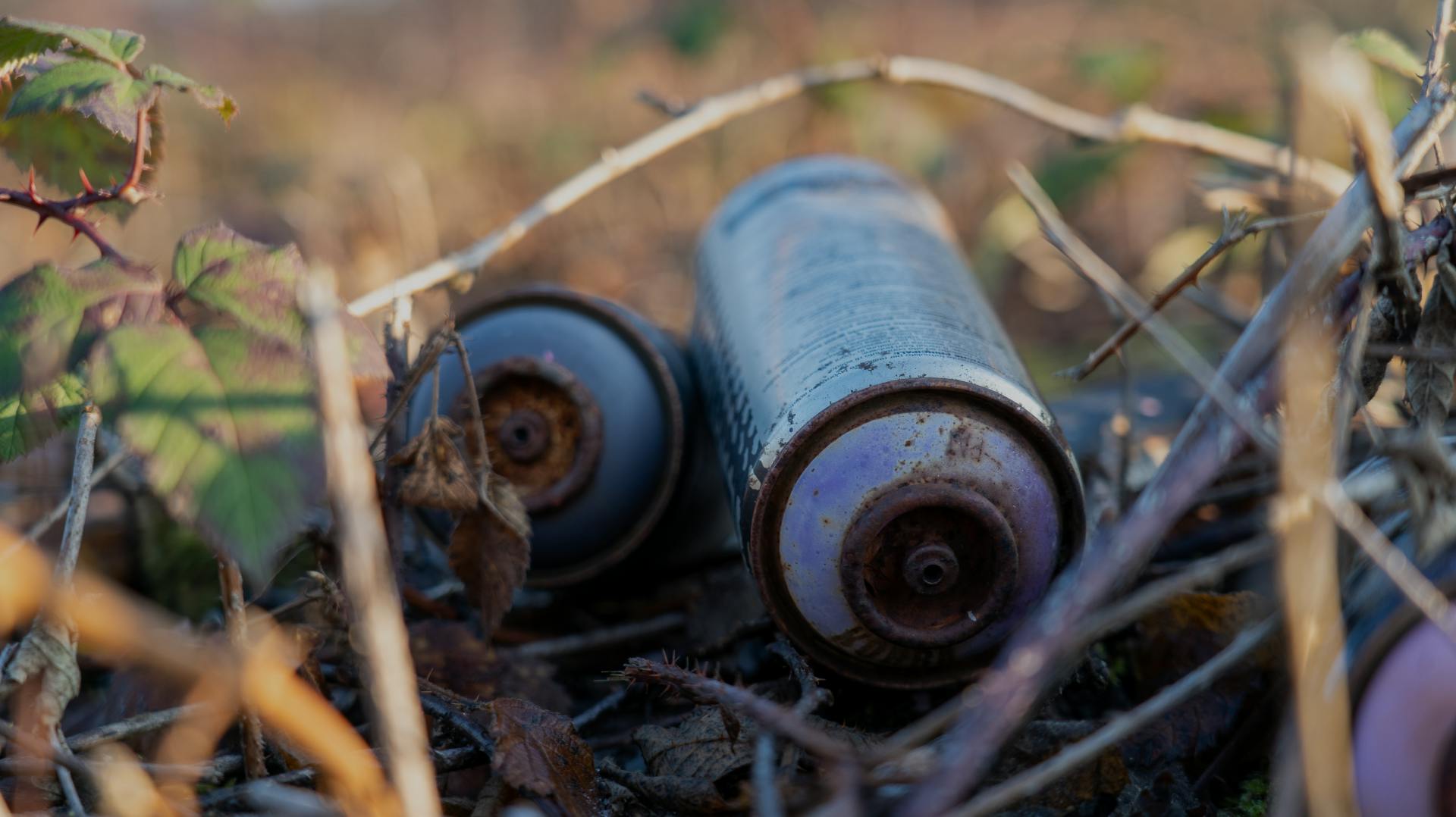Impact
Production
Use
End-of-Life
The End-of-Life of spray paint cans. Do you know what happens to your cans when you finish your piece and dispose of your cans? How and where do you dispose your cans? In this article, we share light on the topic of waste treatment of spray paint cans.
A single aerosol can seems like an innocent item. What harm could a spray can do? How much impact could one more spray paint can have on a landfill site? The problem is, it’s not just one can. Throwing aerosol cans into the trash is actually bad for the environment. Because unfortunately, this is not the right method of waste disposal for aerosol spray cans [1].
01. Spray can disposal
There are three main forms or methods by which spray paint cans (aerosols) can be treated.
- Recycling: the cans are recycled (preferred route) via a hazardous waste treatment program.
- Incineration: empty spray paint cans are collected via regular waste collection and end up in a waste treatment facility that incinerates the trash. Afterward, metals and other remaining are retrieved from the fly-ashes.
- Landfill: a spray can ends up at a landfill (a designated giant pile of waste);
The other option is that spray paint cans are not treated at all and are exposed in nature (e.g. leaving them around at the spot).
02. End-of-Life facts
The United States produces 3.5 billion aerosol cans every year. This number does not only represent spray paint but the total amount of produced aerosol cans (e.g. deodorant, air refreshers, lubricants, etc.). But not everyone that uses them knows how to dispose of aerosol cans. Since most of these cans are steel or aluminum, they are recyclable. However, only 30 percent of these cans ever make it to the recycling pile. We assume that this statistic is even lower with regards to graffiti and spray paint cans.
To make matters worse, due to the volatile propellants used to pressurize their contents, most aerosol cans are considered hazardous waste by the EPA. The product in the aerosol can (i.e., brake cleaning fluids, paints, sealants, cleaning solvents, etc.) could also be hazardous and exhibit properties such as ignitability, corrosivity, reactivity and toxicity. Incineration is a tricky thing when we are talking about the waste treatment options of spray paint cans.
03. Complexity of waste treatment
We found that waste treatment options for spray paint cans differ per region. Our current (LCA) model to determine the environmental impact of spray paint shows the difference between recycling and incineration. Because these are the two common methods.
We want to invite recyclers to share more information about the recycling steps. What does the recycling process actually look like? But also which useful resources are obtained from recycling spray paint cans? How can we collectively make the waste treatment of spray paint cans (aerosols) less complex? Share your experience with us and we will inform our fellow Aerosol Alliance allies!
